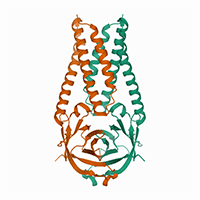Research that can contribute to the fight against COVID-19
Can give cheaper and faster drug design, treatment or vaccine development

Professor Erik Aurell at The division of computational science and technology, is looking into ways the coronavirus SARS-CoV-2 may be extra sensitive to exposure to pairs of drugs acting on mutations working in pairs.
Tell us about your paper and your research in general.
”One line of my, and many others’ research has, for about a decade, been on ways to retrieve information from large collections of similar – but not identical, biological sequences.
A main example used to be how to predict contacts between amino acids in protein structures from variants of essentially the same protein. A few years ago we decided to try something similar on collections of whole-genome sequences of human pathogens (bacteria or viruses). We did one study on pneumococcus (which causes pneumonia), and shortly afterwards, other researchers did similar studies on gonococcus (which causes gonorrhoea) and meningococcus (which causes meningitis, or inflammation of the protective membranes of the brain). Now we have done a study along the same lines on the coronavirus SARS-CoV-2, which causes the disease COVID-19.”
What impact can this have on society?
”As a result of the pandemic, an enormous number of complete genome sequences have been gathered for SARS-CoV-2. When we did the study, which was published this month, there were a bit more than 50,000 (that was in early August); today (November 30) there are 225,000. This data is a resource we can use in many ways. Our analysis shows that there is information hidden in these data that is not immediately obvious. There is almost surely lots of other kinds of “hidden information” as well. Since sequencing is fast, accurate and (relatively) cheap, any way to leverage collections of genome sequences in a new way has the potential to contribute to cheaper and faster methods in, for instance, drug design, treatment regimen design or vaccine development.”
Can this help beat the coronavirus? In what way?

”The output of our methods are indications that the combined effect of two mutations is larger (or smaller) than the sum of the effects of the two mutations separately. This means that there must be some compensation going on. If, for some reason, the virus has mutated in one position, there is some pressure on it to change also on the other, which is an indication that the virus may be extra sensitive to exposure to pairs of drugs acting on the two positions.
We found several such pairs of positions where one member of the pair was in the small virus protein ORF3a. This protein is unique to the coronavirus family and is known to play a role in severe COVID-19 lung infections. Our work hence suggests drug cocktails where one component interferes with the action of ORF3a, and another component interferes with its interaction partner. Our collaborators are about to start lab test of this hypothesis. Unfortunately, it was not possible to propose something that could become a treatment right away, as there are at present no approved drugs acting on ORF3a or its predicted human interaction partners. However, with the current speed of COVID-19 research, perhaps such repurposed drugs (or new ones) will appear in the near future.”
This research has been published in the journal Proceedings of the national academy of sciences of the United States of America (PNAS) with Hong-Li Zeng et al (November 2020):
Global analysis of more than 50,000 SARS-CoV-2 genomes reveals epistasis between eight viral genes
The project was supported by Science for Life Labs/KAW-projektet “Viral sequence evolution research program”.

